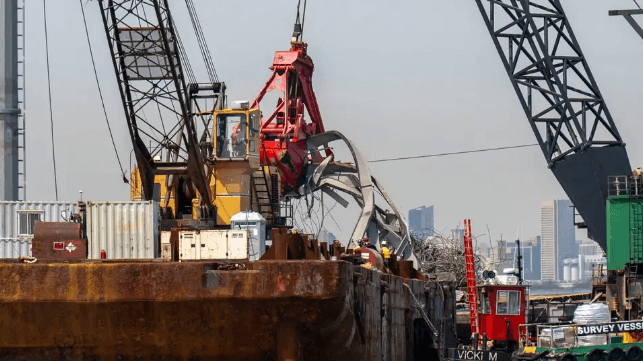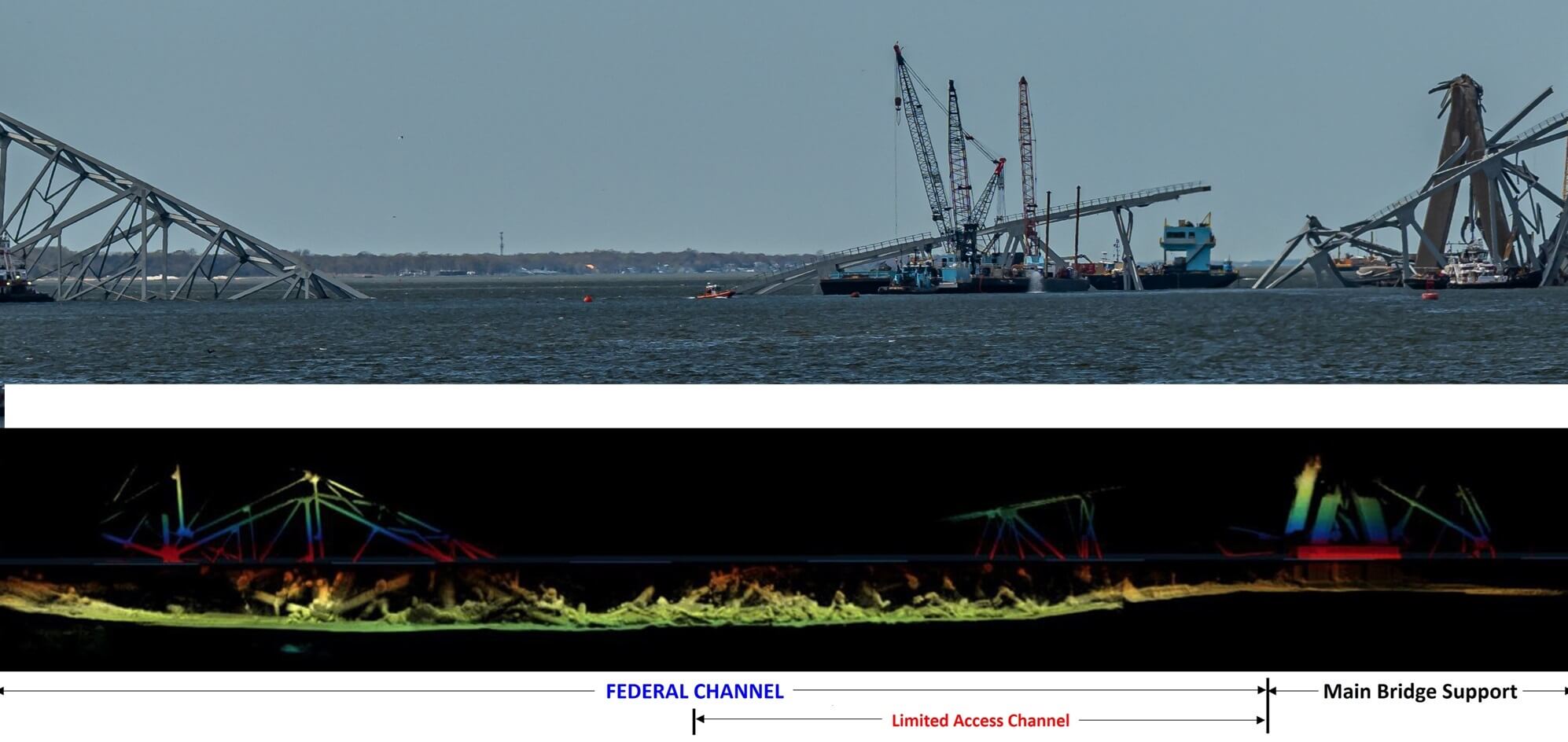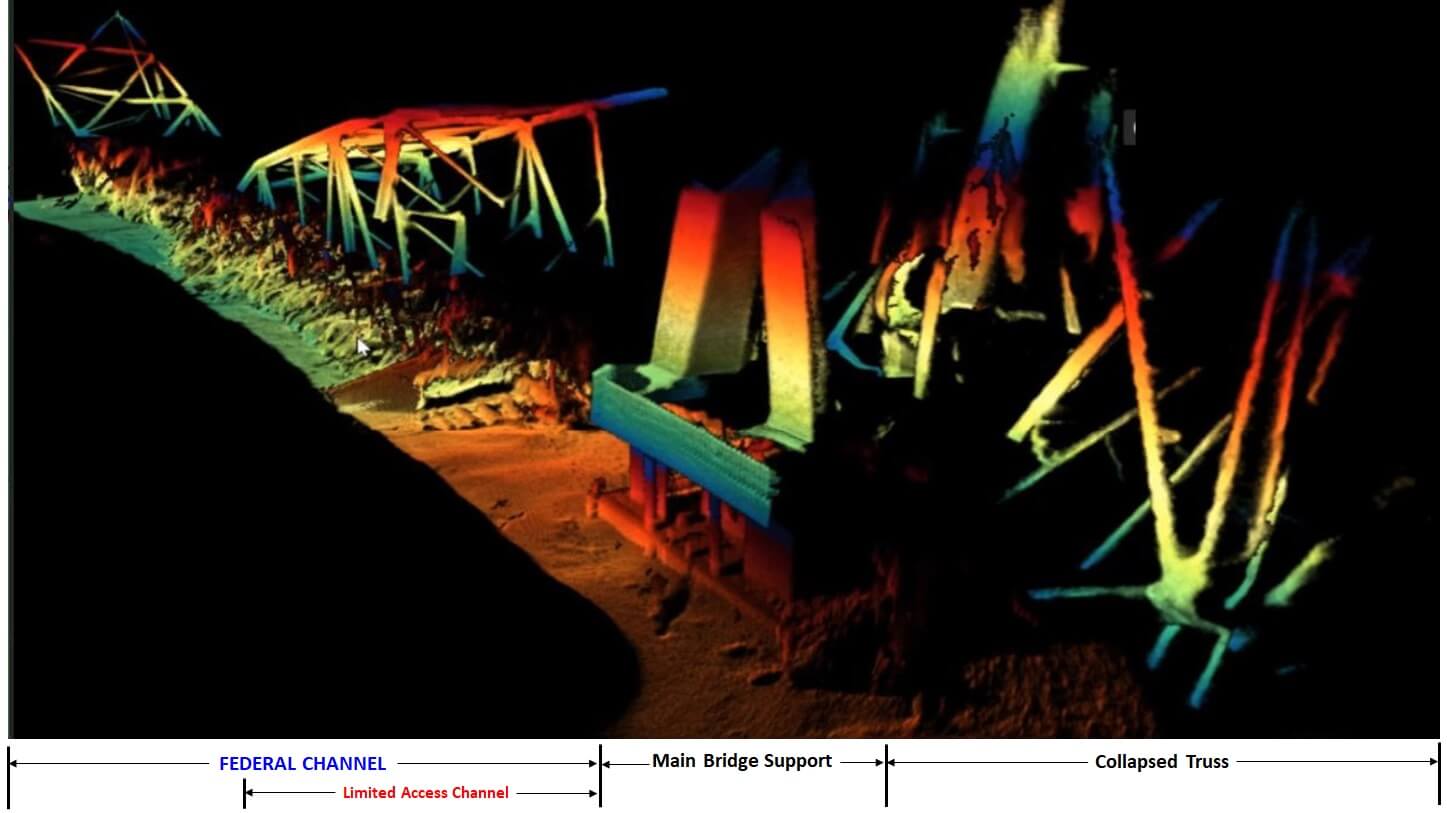New Sonar Data Shows the Challenge of Clearing Baltimore Bridge's Wreckage

The U.S. Navy's Supervisor of Diving and Salvage (SUPSALV) has released new sonar imagery of the wreckage of Baltimore's Francis Scott Key Bridge, showing the full extent of the damage and the work that will be required to restore the main shipping channel.
Courtesy USACE / SUPSALV (click to enlarge)
The depiction shows that the tangled wreckage has significantly reduced the navigable depth of the center of the federal channel, including areas where no wreckage is visible above the surface. As USACE has warned before, the steel truss span disintegrated into a tangled mess when it hit the bottom, and its girders are visibly twisted together and embedded in the mud.
The 3D sonar survey was created through painstaking work by Navy salvage divers, who operated in darkness and near-zero visibility to assess the contours of the wreckage.
 A panorama of Baltimore's ship channel (top) and a corresponding 3D sonar survey of the wreckage below water (bottom) (USACE / SUPSALV, click to enlarge)
A panorama of Baltimore's ship channel (top) and a corresponding 3D sonar survey of the wreckage below water (bottom) (USACE / SUPSALV, click to enlarge)
The diagrams show two separate areas of focus for the Army Corps-led salvage team. The first is a "Limited Access Channel," a 35-foot-deep fairway that contractors will clear on the north side of the center span. This will be big enough to allow ro/ros, barges and government vessels to go through. Clearing that channel will resolve minor national-defense effects of the bridge collapse: Four Military Sealift Command cargo ships are currently on the landward side of the bridge and cannot get out; meanwhile, several larger Coast Guard cutters are due to call in Baltimore for repairs and cannot get in, according to USNI.
The Limited Access Channel includes areas with significant underwater wreckage, which may be challenging to clear. However, it is also further away from the difficult operation to remove the container ship Dali, which is entangled with a section of the bridge truss. The delicate task of cutting Dali free is just beginning, and salvors are starting to hoist off intact containers from Dali's bow.
When the channel is restored, thousands of stevedores and others who depend on the Port of Baltimore will be able to get back to work. While the primary focus has been on containerized and ro/ro cargoes, Baltimore is also home to America's second-largest coal terminal, which has been shuttered by the channel closure. In its April outlook, the Energy Information Administration (EIA) said that U.S. coal exports will drop by fully a third this month and by 20 percent in May. The impact will reduce U.S. coal exports by six percent for the full year.

